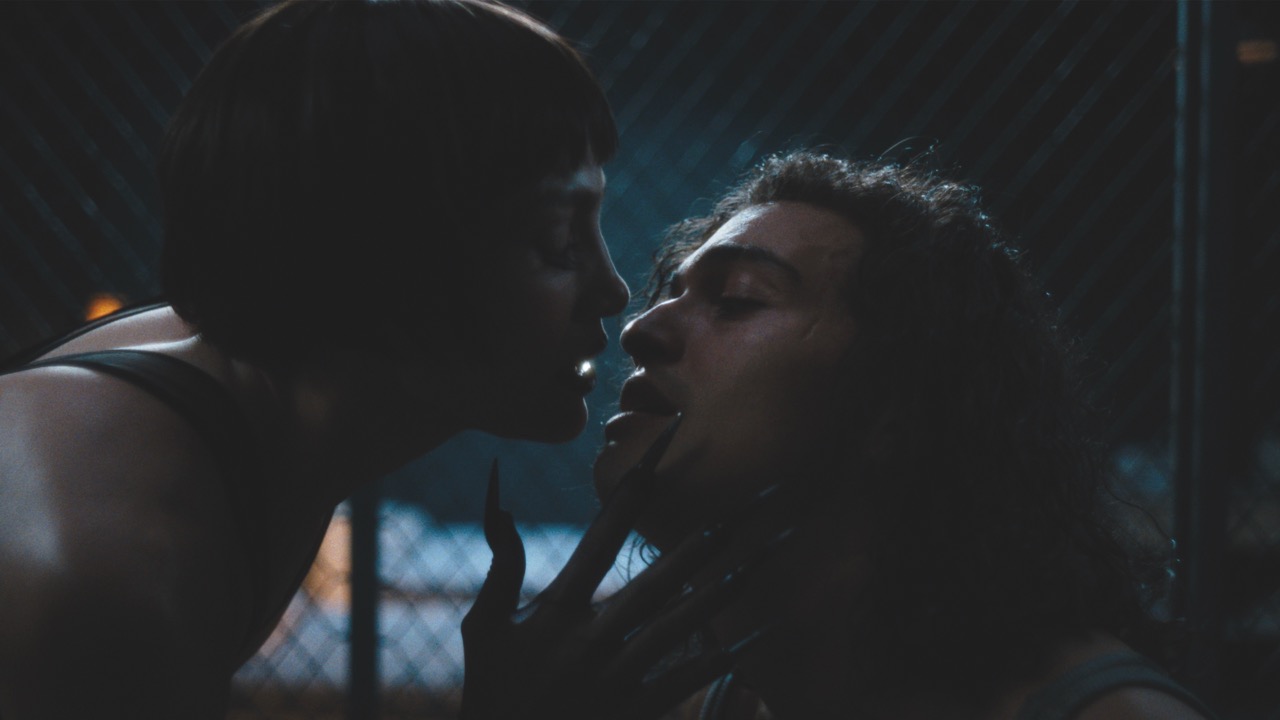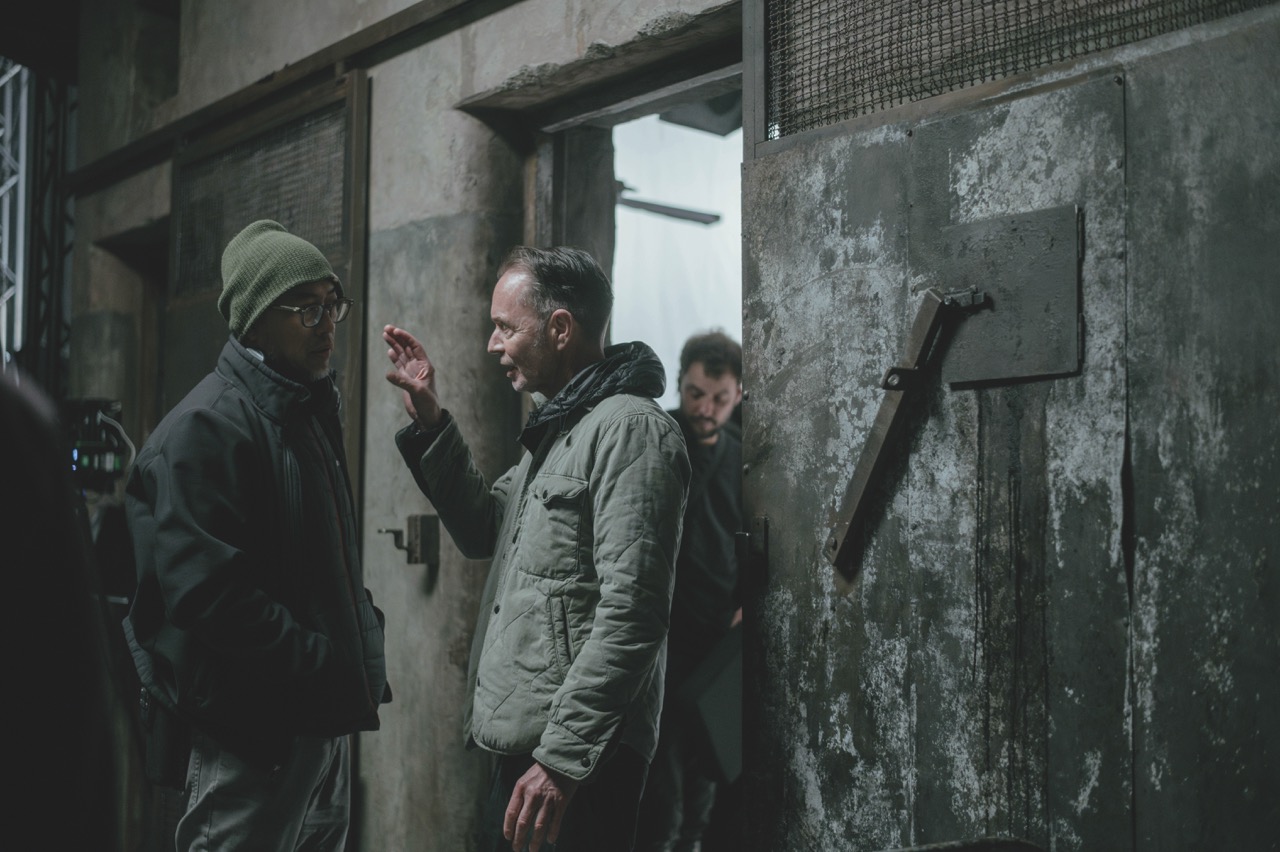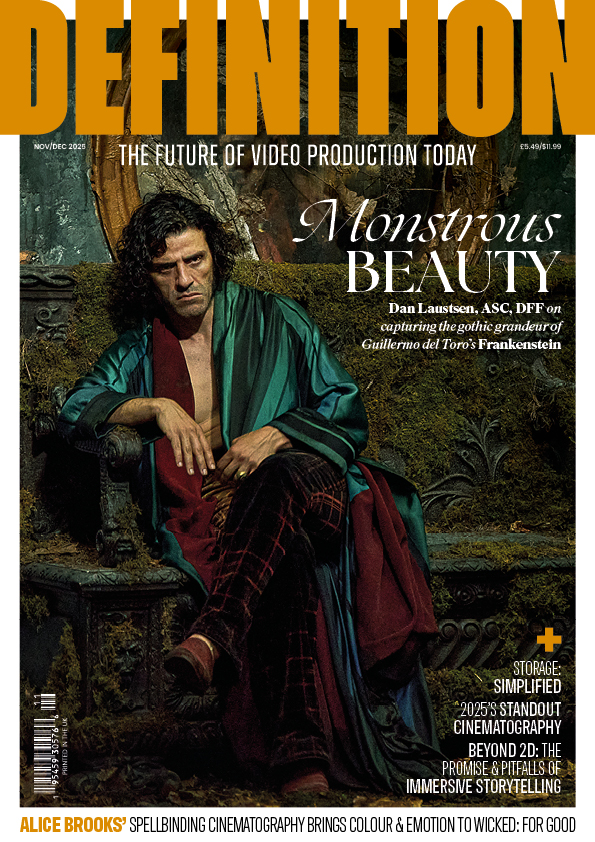
Production: Kiss of the Spider Woman
Posted on Nov 16, 2025 by Admin
Cinematographer Tobias Schliessler, ASC shares how he and director Bill Condon reimagined Kiss of the Spider Woman’s strange, subversive story through two distinct visual worlds
Words Nicola Foley | Images Roadside Attractions
Kiss of the Spider Woman began as a strange little novel by Manuel Puig, published in 1976 and told almost entirely through the daily conversations of two cellmates in an Argentine prison. Since then it’s lived many lives: Puig adapted it for the stage a few years later, and in 1985 it made its way to Hollywood, where director Héctor Babenco’s version earned William Hurt an Oscar and brought this queer prison love story to a global audience. The early nineties saw Terrence McNally’s musical adaptation hit Broadway, complete with a score by John Kander and Fred Ebb, the powerhouse duo behind Cabaret and Chicago.
In 2025, the story returns once again, this time with J.Lo – in what might be the ultimate showcase for her triple-threat talents – and some jaw-droppingly beautiful visuals. Directed by musical veteran Bill Condon (Dreamgirls, The Greatest Showman, Chicago), this latest Kiss of the Spider Woman revisits Puig’s dual realities: one a grim Buenos Aires prison during the ‘Dirty War’, and the other a Technicolor fantasy world that unfolds within Molina’s imagination as he tells fellow prisoner (and eventual lover) Valentín about the Hollywood starlet he idolises.
These worlds were brought to life by cinematographer Tobias Schliessler, ASC, a long-time collaborator of Condon’s, who couldn’t wait to jump on board once he’d read the script.
“I instantly loved it and was so excited by its visual challenges. Bill and I have tackled films across many genres, but musicals are where we have the most fun,” he shares. “He’s such a passionate, talented director, and it’s an honour every time he brings me back. It’s something I’ll never take for granted.”
One thing Schliessler enjoys most about their dynamic is the laser-focused vision that Condon brings to every project, along with his commitment to preparation. “We spend many hours in pre-production on each set, carefully crafting shot lists and deciding on the shooting order for each scene,” he says. “That kind of planning gives us the freedom to be creative on the day, because when you have a strong plan, it’s so much easier to adapt when things change.”
The level of planning is on display in the film’s beautifully constructed visual language, which moves between gritty realism and lush glamour. Schliessler was already familiar with Kiss of the Spider Woman’s history – he’d read Puig’s novel and seen Babenco’s 1985 film – but he and Condon were determined to create something that felt entirely their own.
Defining the visual worlds
While it gave the filmmakers a fun challenge, having to effectively create two films in one was a lot of work, beginning with defining the rules of the two different visual realms. The goal for the fantasy sequences was to capture the authenticity of classic musicals by emulating the look of the three-strip Technicolor camera process. “We wanted rich, saturated colours and beautiful, creamy skin tones,” he explains. To guide their approach, Condon created an elaborate moodboard, drawing on visuals from iconic films like An American in Paris, Cover Girl, Meet Me in St Louis, Gentlemen Prefer Blondes and Singin’ in the Rain. “These references became our creative bible, shaping guidelines for camera movement, composition and lighting,” remembers Schliessler.
“The 1981 Argentine scenes, in and outside the prison, demanded a completely different approach,” he continues. “In the prison cell, we wanted the audience to feel trapped alongside Valentín and Molina, sharing their intimate, claustrophobic world.”
A key inspiration for these scenes came from Jacques Audiard’s A Prophet. “I loved the way Audiard and cinematographer Stéphane Fontaine captured the raw reality of prison life, which was exactly the authenticity we were after for these scenes. We also drew inspiration from Sidney Lumet’s Serpico and Prince of the City, William Friedkin’s Sorcerer and Ulu Grosbard’s Straight Time. These films grounded their characters in environments that felt lived-in and intense.”
While the two worlds in the film are visually very distinct, the director and DOP wanted to keep them connected and the transitions between the two subtle. One technique for doing this was through stylised lighting changes, and another was adjusting the aspect ratio. The Technicolor sequences are framed in 1.66:1 (rather than the period-accurate 1.37:1 Academy ratio – the jump would have felt too jarring, explains Schliessler), while the prison scenes were shot in 1.85:1.
Vintage glamour
For the fantasy world, in which J.Lo takes on the persona of the alluring Ingrid Luna, the priority was finding a camera package that accurately replicated the three-strip Technicolor process. After extensive testing, they chose a Sony VENICE 2 paired with the Cooke Speed Panchro Classic FF primes – one of the most commonly used lenses in the era being depicted. “For the three-strip Technicolor process, it was crucial to have lenses that delivered sharp focus edge-to-edge with minimal distortion. If a lens distorted, one or more of the colour channels could appear misaligned at the edges and cause colour fringing,” says Schliessler. “The Cooke Speed Panchro lenses were made for the three-strip Technicolor cameras and we felt they gave us the most authentic look. Our hero focal lengths were the 40mm and 50mm for minimal distortion, with the occasional use of a 75mm for beauty close-ups.”
Most Technicolor sequences were shot with a single camera, favouring long, wide master shots and period-accurate camera movements to remain true to the style of the films of the forties and fifties. For these elaborate set pieces, time was the biggest challenge, reveals Schliessler. “We shot 14 musical numbers back-to-back in 17 days, which was very physically demanding on our cast and technically demanding on our crew.
“For my department, our biggest hurdle was managing the logistics of prelighting multiple sets while simultaneously shooting on another stage. I’m very grateful to my gaffer Ken Shibata, key grip Greg Cahill and their outstanding rigging teams. Without their coordination and tireless work, we simply would never have been able to keep pace!” he adds.
Precise planning was key to making sure it all came together on the day, with Schliessler and Condon working closely with choreographer Sergio Trujillo to establish the most effective camera angles for the choreography and design the long master shots that would define the visual language of each number. “For me, the teamwork of building the dance sequences specifically for the camera is one of the most creatively rewarding aspects of shooting musical numbers,” he says. “Sergio and his team were also incredibly meticulous in capturing and editing reference videos of every routine during rehearsals under Bill’s direction, which proved invaluable. This process often requires multiple passes before we arrive at a previs that acts as a blueprint for all departments moving forward.”
Behind bars
The claustrophobic confines of the prison cell called for entirely different technical choices. Here, the LUT was inspired by the bleach bypass print process, emphasising cooler, more desaturated tones, while the camera of choice was the ALEXA Mini LF (small enough to fit in tight spaces, but with a large format look) with ARRI DNA LF lenses. “For the prison, we wanted to be physically closer, creating a deeper sense of intimacy in the emotional scenes, and our prime focal lengths were the 29mm and 35mm DNA LF primes,” explains Schliessler. “We shot every scene with two handheld cameras on Easyrigs, often cross-shooting for simultaneous coverage of both actors, giving them complete freedom to move within the confines of the cell,” he continues. “It was vital to capture the intimate, claustrophobic feeling we needed for those scenes.”
Despite the elaborate choreography and punishingly tight schedule of the musical numbers, it was these scenes that the DOP found most daunting. “It’s a challenge to keep things visually engaging when you’re limited to such a small space – and in Kiss of the Spider Woman, so much of the film takes place in that cell,” he explains. “It was also the most physically demanding on my camera operators, who handheld the cameras on Easyrigs throughout those scenes to make sure the actors had freedom of movement.”
Colour & light
Light and colour were central to defining the film’s two worlds. On-set, Schliessler and his team used a mix of fixtures for the desired result: ARRI SkyPanels and tungsten fresnels to evoke the bright, high-key glamour of the Technicolor sequences, and Kino FreeStyle LEDs and Astera Titan tubes to capture the cooler, more naturalistic tones found in the prison.
“I spent weeks with my DI colourist, Stefan Sonnenfeld at Company 3, fine-tuning the camera LUT in combination with makeup, costumes, set design and lighting colour temperatures to strike the perfect balance before we started shooting,” he comments. “Stefan has a truly incredible eye for enhancing storytelling through subtle manipulation of colour and contrast, and Company 3 always brings exceptional colour science to the table, particularly when emulating classic film looks.”
Although the look was further refined in the final grade, Schliessler preferred to do as much as possible in camera. “I always strive to get as close as I can to our final vision during production,” he shares. “If I can shape the image in camera, that still feels the most natural to me.”
A new lease of life
Reflecting on Kiss of the Spider Woman, Schliessler believes his biggest creative triumph was nailing the high-key lighting style of classic musicals. “Using modern tools to bring back that vintage look and feeling was so rewarding and I’m proud of what we achieved,” he shares. It was also another reminder of why he loves what he does. “Cinematography is a constant learning experience. Every film presents new creative challenges that push me to grow, and each solution adds to my craft, shaping me into a better cinematographer. This couldn’t have been truer for Kiss of the Spider Woman, which makes me even more excited to dive into another musical, armed with everything I learned from this film.”
This story appears in the November/December 2025 issue of Definition












